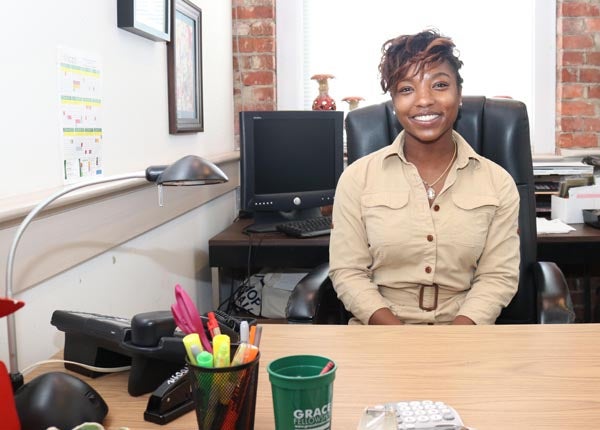CONNECTING THE ARTS
ECU intern bridging communities through arts council
Art has a special way of bringing communities together, often bridging economic and racial classes despite innate differences between contrasting groups.
Rising East Carolina University senior Christina Dixon used her summer internship with the Community Council for the Arts in Kinston to explore ways to link divergant factions through artistic endeavors, hoping to unite communities around one-of-a-kind works produced by regional artists.
What she found was a community rich with talent, but struggling to connect with local residents that are vital to keeping the arts thriving in Kinston and Lenoir County.
“I’m from Greenville, so I travel through Kinston all the time,” Dixon said. “I always looked at Kinston as a place where I saw art and creative activities, but I didn’t see people out interacting with the art. I didn’t know anything about Kinston, but I had questions. What’s going on artistically in Kinston? Why is it a special place? Why do people want to come here?

Christina Dixon and Sandy Landis, executive director for the Community Council for the Arts, are figuring out ways to better connect their programs with the Kinston community.
“When I found out about this opportunity with the SECU Public Fellow Internship program, I thought it was perfect,” she said. “It combined my love of art with working directly with the community.”
Dixon’s internship allowed her to work directly with the public teaching students at the council’s summer art camps, while also interacting with regional artists and community groups to help support the council.
“We do a lot of great things here at the Community Council for the Arts, but we don’t connect with our community as a whole very well,” said Sandy Landis, executive director for the Community Council for the Arts. “There is still a bit of a disconnect. We don’t tell our story very well.”
Dixon is attempting to solve that problem for the council by reaching out to middle and high school students and church groups.
“We want to get local students in here to participate in these summer programs,” Dixon said. “That’s how you’re going to get people in the door and thinking about art. Kinston has a diverse population and we want to start serving all of our different segments. Everyone can learn about art and feel included. We need more of that.”
The textiles design major also sat in on proposal meetings with three artists pitching their work for the smART Kinston City Project. The project envisions Kinston as a hub for the arts in eastern North Carolina with dreams of creating an art avenue downtown.
Dixon sees the inclusion of input from supporters with varied backgrounds as essential to bolstering the art culture in Kinston.
“It’s important to always grow and keep your culture fresh by working with those that are different than you,” she said. “Maybe they’re younger; maybe they have a different economic background; maybe they’re a different ethnicity. Being more welcoming and accepting new ideas is going to take you where you want to go, not where you’ve been. Things can be better. You just can’t shy away from change. Kinston has extreme potential. We just have to keep reaching more people.”
On top of leading and assisting with summer arts camps, Landis shared with Dixon ways to hang, label and exhibit art.
“Internships are great outreach programs that allow the university to stay involved in regional communities,” Landis said. “It’s really important for ECU to reach out and provide students enriching opportunities to learn and work directly with the people the university serves. It really validates the work we’re doing here in Kinston.”
Dixon, who plans to pursue a master’s of science in textiles, said her time in Kinston has provided her a rare experience.
“I’ve had other internships, but this one has been unique,” she said. “In school you’re taught about what issues you might face, but then you get in and start working and see that you’re battling social issues, gender issues, financial limitations and other things that don’t show up in a text book. I’m learning things that I could only get from this experience, and I am thankful for it.”
